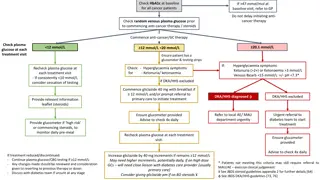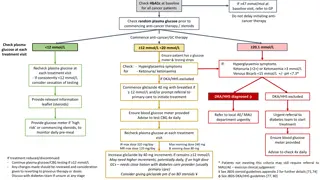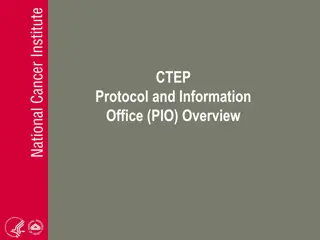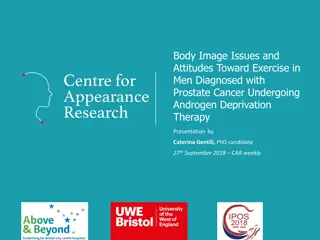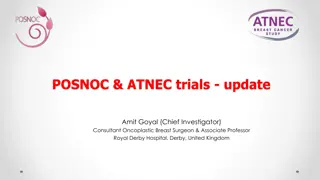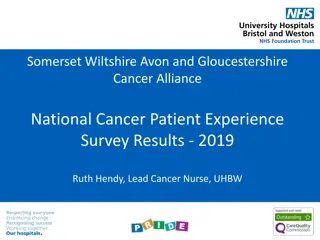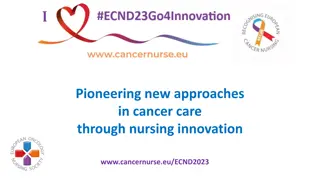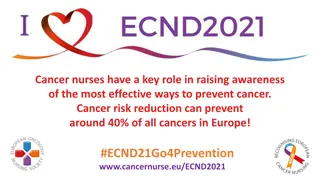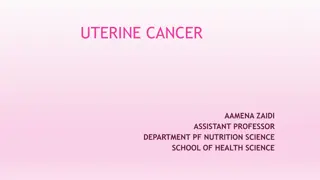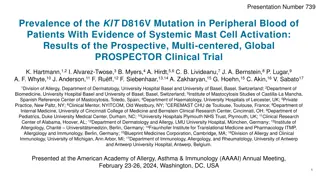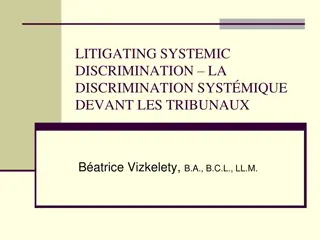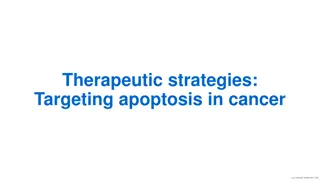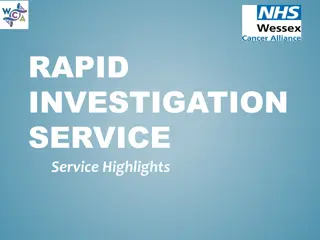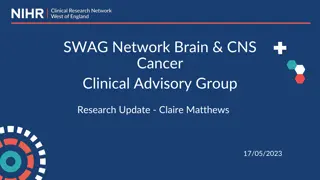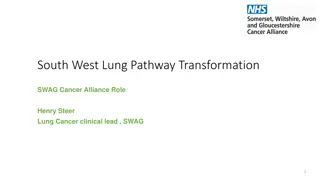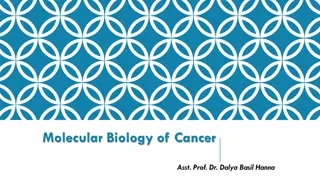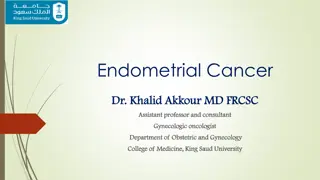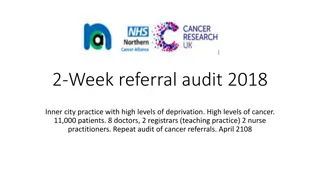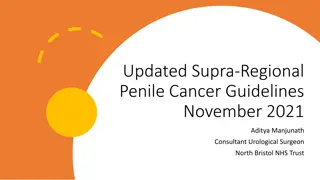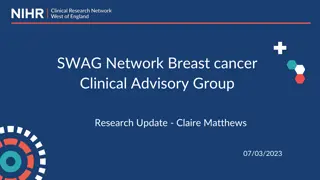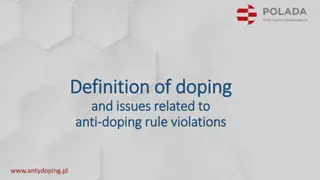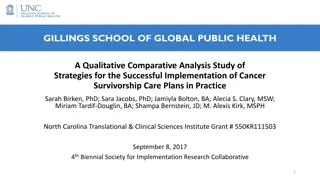Safe Practice Principles for Systemic Anti-Cancer Therapy (SACT) 2019
Systemic Anti-Cancer Therapy (SACT) involves chemotherapy and targeted agents for cancer treatment. Risks include errors with non-accredited staff, incomplete prescriptions, incorrect dosing, and patient education deficiencies. Safe practice principles emphasize specialist care, established protocols, pharmacist verification, and patient counseling.
Download Presentation

Please find below an Image/Link to download the presentation.
The content on the website is provided AS IS for your information and personal use only. It may not be sold, licensed, or shared on other websites without obtaining consent from the author. Download presentation by click this link. If you encounter any issues during the download, it is possible that the publisher has removed the file from their server.
E N D
Presentation Transcript
SACT Principles of Safe Practice 2019
Contents What is SACT? Risks of SACT Principles of safe practice NCEPOD recommendations Prescribing Types of SACT Chemotherapy Chemotherapy toxicities Chemotherapy clinical verification (screening) considerations Targeted therapies Oral targeted therapies Oral targeted therapies clinical verification (screening) considerations Monoclonal antibodies clinical verification (screening) considerations Immunotherapy Immunotherapy toxicities (irAE) Immunotherapy clinical verification (screening) considerations SACT clinical verification (screening) considerations general points to consider Cancer Drug Funding (NHS England) Forms Final checking and release Patient information safe practice Resources
What is SACT? Systemic Anti-Cancer Therapy All chemotherapy and targeted agents used for the treatment of cancer Does not include: Hormonal treatments, e.g. bicalutamide, anastrozole Exception: abiraterone and enzalutamide are included Non-cancer indications
Risks of SACT High risk of errors if non-accredited staff involved Not following established protocols Perception that oral SACT not as toxic as IV SACT Incomplete or illegible prescriptions Incorrect dosing or modification Incorrect labelling and dispensing Patient not fully informed of how to take (orals) or how to manage side effects
Principles of safe practice Manual of Cancer Service Standards (2004) Cancer patients under specialist care Trust chemotherapy policies for IV and oral chemotherapy Formal risk assessments Oral chemotherapy prescribed and dispensed to same standards as IV Patient education and counselling STANDARD All cytotoxic chemotherapy prescriptions should be checked and authorised by a pharmacist. Manual for Cancer Services: Department of Health 2004 3C-2091 BOPA position statement (2004) (Principles of Safe Practice) BOPA Standards for Pharmacy verification of prescriptions for Cancer Medicines, Third Edition October 2018
NCEPOD recommendations All SACT prescriptions should be checked by a pharmacist who has undergone specialist training, demonstrated their competence and is locally authorised/accredited for the task. This applies to oral as well as parenteral treatments Pharmacists should sign (can be electronic) the SACT prescription to indicate that it has been verified and validated for the intended patient and that all the safety checks have been undertaken
Prescribing Within MDT recommendations Within context of written protocols Treatment plan documented in notes including criteria for stopping/modifying treatment Electronic systems designed for the purpose of prescribing SACT to be used Intended deviations from protocol clearly identified and Trust s off-protocol procedure followed Prescriber must be on the SACT prescribing register
Types of SACT Chemotherapy Hormonal therapy Targeted therapy Immunotherapy Advanced Therapy Medicinal Products (ATMPs) Based on a diagram from Hanahan, D., & Weinberg, R. A. (2011). Hallmarks of cancer: the next generation. Cell, 144(5), 646-674.
Chemotherapy Treatment of cancer with the use of cytotoxic drugs Monotherapy or Combination Systemic e.g. IV, IM, SC, oral Regional e.g. intrathecal, intra-arterial, intra-vesical Intent Curative aggressive treatment Neoadjuvant given before surgery to decrease tumour size Adjuvant given after surgery or with radiotherapy to mop up any cancer cells Palliative given to prolong life (months), reduce symptoms Course or continuous Examples FEC, CHOP, ECX Photo courtesy of The Royal Marsden
Chemotherapy toxicities General Myelosuppression Anaemia, neutropenia, thrombocytopenia GCSF where appropriate Blood products Nausea and vomiting Appropriate antiemetic prophylaxis Alopecia Cool cap Fatigue Specific Renal (platinums), hepatic, skin/nail (taxanes), diarrhoea (fluorpyrimidines/irinotecan) REFER TO LOCAL GUIDELINES FOR MANAGEMENT
Chemotherapy clinical verification (screening) considerations Indication Funding/payment of treatment Dosing BSA, weight, flat dose, AUC? Interval Cycle number (course versus continuous) Cumulative dose? Kidney, liver, cardiac function (as appropriate) Toxicities from previous treatment Allergies, co-morbidities, interactions with concurrent medication Supportive medication
Targeted therapies Reprinted by permission from the Licensor: Springer Nature. Wadhwa, R. et al. (2013) Gastric cancer: molecular and clinical dimensions. Nat. Rev. Clin. Oncol. 10(11):643-55 doi:10.1038/nrclinonc.2013.170
Oral targeted therapies Tyrosine kinase inhibitors, MEK inhibitors, PARP inhibitors Continuous or intermittent Monotherapy or combination Histology needed ALK, EGFR, T790M, BRAF, BcrAbl etc Different range of toxicities Hypertension, skin rash, thyroid dysfunction, proteinuria (refer to local guidelines for management) Patients should be counselled by a nurse/pharmacist before initiation of oral SACT Given written information Given emergency contact details
Oral targeted therapies clinical verification (screening) considerations Funding/indication Interval continuous versus intermittent Surplus supply due to: Pack size (30 days supply every 4 weeks) Poor adherence barriers? Previous toxicities Additional monitoring (drug specific) ECG TFTs Urine dip Creatine Kinase Assessment of disease response Routine scans Clinical review
Monoclonal antibodies clinical verification (screening) considerations Indication/funding IV or SC Used alone or in combination with another MAb +/- chemotherapy Interval Re-loading? Continuous versus fixed course length depending on treatment intent Adjuvant Maintenance Metastatic Can affect cardiac function Routine ECHOs required
Immunotherapy Rapidly growing area in cancer management Targets include PD-1,CTLA-4 Acts by waking up the body s own immune system Includes pembrolizumab, nivolumab, ipilimumab, atezolizumab and more Approved for use in many tumour types constantly increasing Different toxicities to conventional chemotherapy Based on a diagram from Garc a-Teijido, P., Cabal, M. L., Fern ndez, I. P., & P rez, Y. F. (2016). Tumor-infiltrating lymphocytes in triple negative breast cancer: the future of immune targeting., 10(Suppl 1), 31-39, which was licenced under CC-BY-NC 3.0. Clinical Medicine Insights: Oncology
Immunotherapy toxicities (irAE) Rash Diarrhoea or colitis Endocrinopathies Hepatitis Pneumonitis Nephritis or renal dysfunction Management should involve specialists, ESMO or local guidelines. Steroids are mainstay of treatment for immune-related toxicities Most toxicities can be resolved but endocrinopathies tend to require lifelong management, e.g. levothyroxine supplementation for hypothyroidism
Immunotherapy clinical verification (screening) considerations Indication/funding Dependant on PDL-1 percentage? Duration of treatment fixed length versus continuing until progression Interval Flat dose versus mg/kg dependant on indication Assessment of disease response Routine scans Clinical review Previous toxicities Severity appropriate for continuation of treatment? Steroids weaned sufficiently?
SACT clinical verification (screening) considerations general points to consider Summary Patient details Protocol identification Prescribed by doctor/NMP on the prescribing register Funding approval Doses correct (compared to previous prescriptions and protocol) Interval since last treatment All drugs in protocol prescribed All required monitoring carried out Ensure maximum doses (also cumulative) not exceeded 1. 2. 3. 4. 5. 6. 7. 8. 9. 10. Additional supportive medication prescribed 11. Queries resolved and documented 12. Pharmacist approves Rx on e-prescribing system 13. Pharmacist documents any outstanding queries 14. Only released when queries resolved and prescriber has confirmed patient is fit for treatment Local practice may vary refer to Trust procedure
Cancer Drug Funding (NHS England) Cancer Drug Fund in current form since 2016 Allows access to some SACT that is not NICE approved Allows faster access to drugs following NICE approval Most high-cost SACT now requires a Blueteq funding approval (individual patient requests) Refer to appropriate funding database to confirm funding source and requirements. Must have approval before starting treatment Refer to specialist pharmacist to confirm local practice Always confirm funding still in place following a treatment break Ensure maximum number of doses not exceeded
Forms Some SACT requires additional documentation to be completed PAF/ePAF Irradiated bloods products (this may be local requirement) Check protocol for additional requirements This can be for the first cycle only or every cycle
Inpatient oral SACT Should be reviewed by oncology/haematology before continuing if admitted on SACT SACT should be transcribed onto patient s inpatient chart/record by an authorised prescriber on the SACT register Confirm regimen and day in current cycle Endorse prescription cytotoxic: Handle with care if appropriate Contact specialist cancer pharmacist (if applicable at your local Trust) Where possible use patient s own supply. Contact specialist pharmacist if this isn t available
Final checking and release Ensure an accredited pharmacist has clinically verified (screened) the prescription Is the prescription prescribed appropriately? Is the prescription dispensed correctly? Have all appropriate entries been made in the notes? Prescriber/authorised nurse/non-medical prescriber FIT FOR SACT Prescriber/nurse BLOODS OK Clinical verifying (screening) pharmacists notes
Patient information safe practice Before every treatment cycle patients should be seen by specialist pharmacist or nurse Ensure full understanding of: How and when to take medicine What to do if dose missed/extra taken Likely adverse effects what to do The need and how to obtain further supplies The role their GP is expected to play in their treatment
Resources Local Trust intranet RM Partners website: rmpartners.nhs.uk BNF: bnf.nice.org.uk/treatment-summary/cytotoxic-drugs.html Electronic Medicines Compendium: www.medicines.org.uk/emc/ Specialist Cancer Pharmacist Clinical Trial Folder Macmillan Cancer Support website: www.macmillan.org.uk/Cancerinformation/Cancertreatment/Treatmenttypes/C hemotherapy/Individualdrugs/Individualdrugs.aspx Cancer Research UK: www.cancerresearchuk.org/ NHS England website: england.nhs.uk


